Australian Stonefruit | English
Australian Stonefruit | Traditional Chinese
Rich in vitamins A, C and E and a great source of dietary fibre and potassium, Australian peaches, nectarines, plums and apricots are some of the world’s best eating fruit thanks to Australia’s leading horticultural practices.
Australia’s warm climate and hot, dry summers promote sweeter, juicier summer stonefruit, and its proximity to Asia enables lower freight costs and better access to fresh markets in the region.
Peaches
Originating in China where it has been cultivated for thousands of years and regarded as the tree of life, the peach has been produced in Australia since the 19th Century.
Peaches bruise easily so look for smooth, unblemished fruit and handle them with care. Peaches will generally arrive in the market in a firm condition and will have flesh that crunches when eaten. As the fruit ripens it will begin to soften and become more juicy.
Peaches are a fantastic any-time snack and great sliced up in fruit or vegetable salads, pies, flans or on top of cheesecakes and pavlovas. They are also brilliant for jams and chutneys and make an excellent accompaniment to chicken, pork and fish.
Australian peaches are available between October and April.
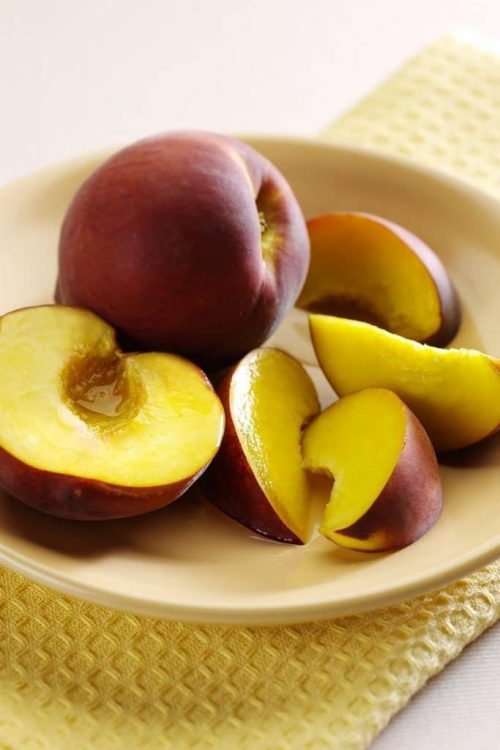
Nectarines
Nectarines, or ‘nectar of the Gods’, are a variety of peach with a smooth yellow, orange or red skin and either white or yellow juicy flesh. Originating in China some 4000 years ago, nectarines can either be eaten firm and crunchy or allowed to ripen to become soft, juicy and lower in acid.
Yellow nectarines will reveal superior eating qualities when they yield slightly to gentle palm pressure and can taste both sweet and tart, while their white counterparts are sweet when they are still firm and crunchy. Both types will express more juice as the fruit softens.
For most cultivars, white speckles around the tip of the fruit is the best indicator of fruit sweetness.
Sliced nectarines are a perfect addition to salads or cheese and fruit platters.
Australian nectarines are available between October and April.
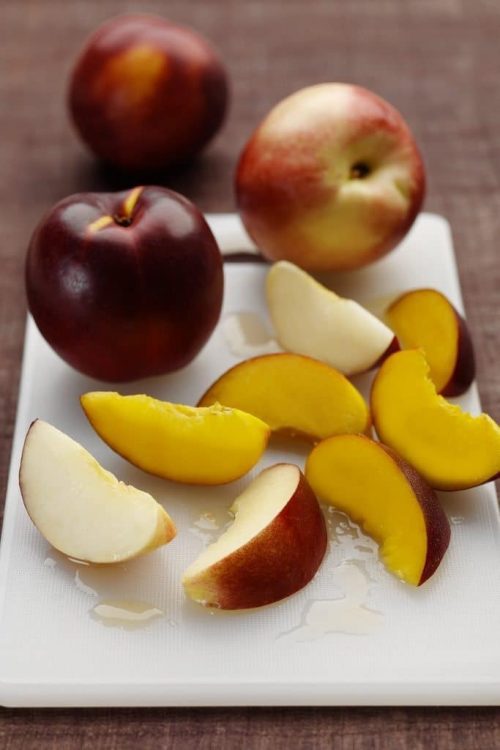
Plums
Plums are far more diverse than their stonefruit relatives coming in a wider range of shapes, sizes, skin colours and tastes which vary from extremely sweet to quite tart. As a result of the wide range of colors it is quite difficult to know exactly which fruit to select. Some cultivars will become dull and soft as they ripen and lose their acid flavor. Other varieties will remain firm as they ripen and will be very high in sugar straight from the tree.
Plums are delicious fresh and ideal for lunch boxes or snacks on the run. They are also fantastic in hot and cold desserts, stewed, grilled, baked or sautéed, and in fruit salads or pies. Plums make tasty sauces for various meats or ice-cream and can also be preserved in jams.
Australian Plums are available between November and April.
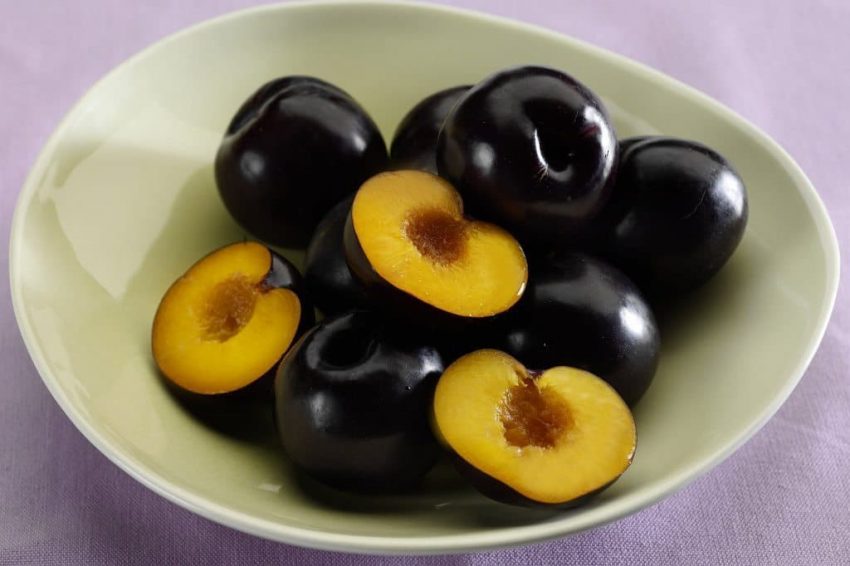
Apricots
In Latin, apricot means ‘precious’, a label earned because it ripens earlier than other stonefruit.
Apricots may have completely yellow in color or orange sometimes with an attractive red blush. Their characteristic flavour and sweetness develops as the fruit softens. Delicious fresh, they are also fabulous in desserts, poached, stewed or pureed, in chutneys, pickles, compotes, salads and sorbets. In addition they pair well with meats and poultry.
Apricots are an excellent source of Vitamin A, with three delicate fruits providing 30% of an adult’s recommended daily intake.
Australian apricots are available between November and February.
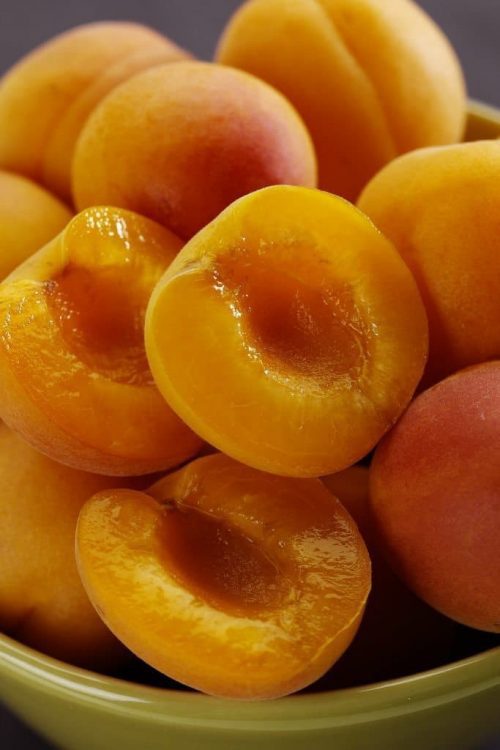
Farming
Australian summer stonefruit is produced in approximately 26 regions in all states across the country. Victoria and New South Wales dominate, however South Australia, Queensland and Western Australia are also important production states.
Production has risen by approximately 25% over the last decade to over 100,000 tonnes per annum produced by about 1,200 growers. The 250 largest summer stonefruit growers are responsible for around 80% of Australian produce.
The summer stonefruit industry in Australia can be classified into low, medium and high chill production areas.
Low chill summer stonefruits are on the market before October and attract a price premium due to their limited availability at that time. Low chill varieties are produced in the area North of Coffs Harbour in NSW to the Atherton Tablelands in QLD, and in the area north of Gingin in WA.
Medium chill varieties are concentrated in and around Stanthorpe in Queensland, the Central Coast of NSW through to the Sydney basin and south to the Araluen Valley, extending to the warmer inland regions of Swan Hill and the Riverland of SA.
High chill fruit is produced in cooler climates including Southern NSW, the Goulburn Valley in VIC, SA, Southern WA, and Tasmania.
Australian Summer Stonefruit Production Map
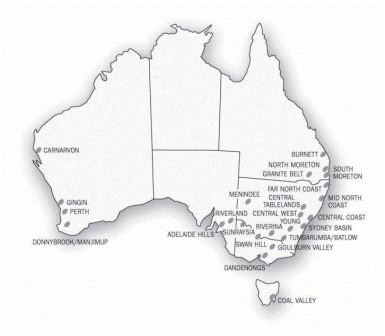
Storage and Handling
Correct storing and handling is important in maintaining good quality Australian summer stonefruit. The ideal storage temperature is 0° to 2° Celsius. Fruit will ripen most effectively between 8° and 25° Celsius.
Under no circumstances should summer stonefruit be stored for any length of time 2° to 8° Celcius. At this temperature the fruit will cease to ripen naturally and may exhibit browning of the flesh and a loss of juice. Fruit stored above 25°C will ripen rapidly and become overripe within 48 hours.
Fruit should not be stored beyond its normal storage life of between two and six weeks, depending on variety, maturity and storage conditions.
Fruit Quality
Australia’s dry climate with cool winters and controlled irrigation ensures growers can produce excellent quality summer stonefruit. The many varieties of yellow and white flesh nectarines and peaches, red and black plums coupled with the diverse growing areas enable growers to export their most current optimal selection of varieties available in the world between November and April.
Australia has very strict food safety standards that apply to retail, wholesale, exporting and processing. These standards are developed jointly be leading Australian retailers and Food Standards Australia New Zealand (FSANZ). All reputable Australian summer stonefruit producers will operate an independently audited HACCP-based food safety system. These systems cover all facets of production and include periodic testing of fruit to ensure it complies with maximum residue level (MRL) requirements in proposed destination markets.
Basic quality parameters are in place dictating tolerance levels to the fruit’s shape, colour and blemishes. When packing fruit, packers are given the quality parameters of the fruit and the tolerance of each style in the finished pack.